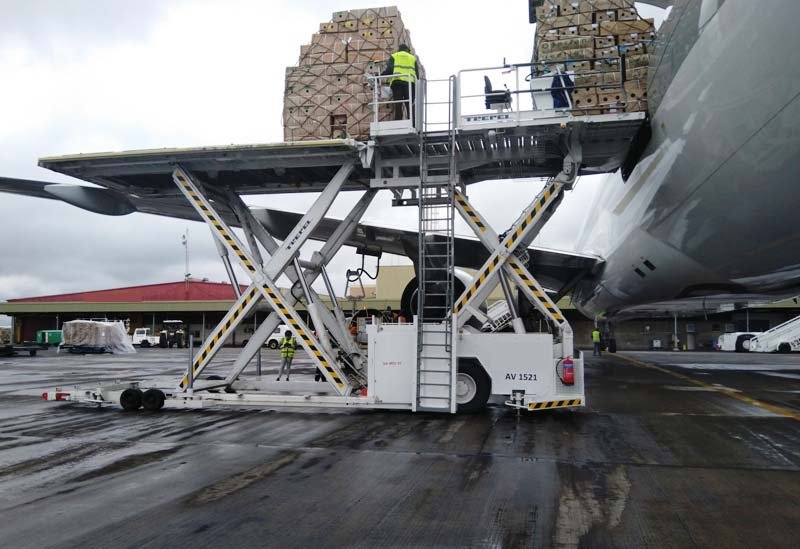COVID-19 pandemic has bolstered the export of herbal and immune boosting Spices like turmeric, cumin, coriander and ginger from the country, considering its health benefits and medicinal properties. Traditionally, pepper, cardamom, ginger, turmeric, coriander, cumin, celery, fennel, fenugreek, nutmeg, spice oils and oleoresins, and mint products are the major Spices shipped abroad. Despite constraints of the pandemic-disruption to global trade, the volume and value of Indian Spices has increased in exports. While the biggest buyers of Indian Spices in 2019-2020 remained the US, UK, Europe and Vietnam, other major destinations include Bangladesh, Malaysia, UAE, Indonesia, Thailand and Iran.
Ritika Arora Bhola
India, known as the home of Spices, has a long history of trading with the ancient civilisations of Rome and China. Today, Indian Spices are the most sought-after globally, given their exquisite aroma, texture, taste and medicinal value.
No doubt, India is said to be the world’s largest producer of turmeric and right after the COVID -19 outbreak, turmeric sales went up commendably by 25 to 30 per cent. After turmeric, ginger proved to be the most purchased spice globally.
According to a statement released by the Spices Board in 2020, ginger registered an increase of 178 per cent in volume of exports and 129 per cent in value at 50,410 tonnes and Rs 449 crore in value.
Ginger exports were mainly to the US, Morocco and Bangladesh, whereas turmeric was mainly exported to Iran, the US, Bangladesh and Morocco.
According to another report by ASSOCHAM, Spices exports from India have gone up by 23 per cent in dollar terms to US$359 million (Rs 2,721 crore) in June 2020, compared to US$292 million (Rs 2,030 crore) during the same month in 2019.
Indian coriander had biggest demand in Malaysia, while cumin was mainly exported to Vietnam. The US was the biggest consumer of Indian celery and fenugreek, and second to Vietnam in case of fennel. Indian garlic had huge demand in Malaysia and the US. Curry powder was mainly exported to the UAE and the US. While UAE and Kuwait accounted for maximum cardamom exports, Indian chillies were in great demand in China and Vietnam.
“We have not noticed any downward trend in Spices consumption even during COVID-19. Also, the adulteration of Spices has come down this year,” BN Jha, Deputy Director, Marketing, Spices Board of India at Mumbai had said to the media. Specific to exports, Jha said, “The exports of turmeric, chilly, cumin have been increasingly high in 2020 as compared to previous year. India also exports herbal Spices, along with 50 per cent value-added Spices.”
Turmeric’s domestic and export demand rising
Indian Spices have always been acknowledged at global level not only for its distinct flavours but also for its medicinal properties. “When it comes to turmeric, India is a global exporter and world’s largest producer. India contributes 80 per cent to the global turmeric production. Apart from this, 60 per cent of the exports originate from India. From the last 10 years, demand for turmeric has increased by 300 per cent,” says Girish Kunder, Regional Commercial Manager- India at ECS Group. “When compared to previous year, the demand has been increasing constantly and mainly coming from countries like USA, UK, Germany, Iran, Bangladesh, Morocco, Canada as well as a few Middle Eastern countries.”
“With the support from government, Spices board and TMA in setting up various meets and trade fairs for farmers, buyers/sellers and industry players to create awareness and facilitate turmeric production to meet growing demand domestically and globally. Considering market size and potential value of this product, India stands at a favourable spot for potential investments, especially from MNCs involved in food processing, pharmaceuticals, cloth dying industry, cosmetics, and health and herbal products,” adds Kunder.
“Demand for Spices did go up during the pandemic because of its medicinal value. As per market statistics, India exports 10 per cent of the total estimated turmeric production. Domestic demand for Spices will always be high as we use them on daily basis. Internationally, the usage is expected to grow. Since 2007, turmeric exports have doubled, and it will increase by nearly 1.5 times in the next decade or so,” believes Dipen Lalsodagar, Deputy Director– Cargo Sales, Global Aviation services.
According to Bharat J Thakkar, Joint Managing Director, Zeus Air Services, Turmeric ranks third in the total exports of Spices from India. “North America is the largest regional market for India’s turmeric exports while Europe is the fastest growing market. India’s turmeric exports have touched $236 million (around Rs 1,632 crore) in 2018 and North America has emerged as the largest market for the commodity, according to Trade Promotion Council of India.”
“Iran, Sri Lanka, Japan, UK, South Africa, Myanmar, and the Netherlands are also some of the major importers.”
Export Highlights and Key Markets
- In the financial year 2020, Spices worth US$ 3.65 billion were exported.
- During financial year 2019, a total of 1.10 million tonnes of Spices and spice products valued US$ 2.80 billion was exported from the country as against 1.02 million tonnes valued US$ 2.78 billion in financial year 2018.
- In financial year 20, ginger export showed the highest growth of 47 per cent with 19,410 tonnes, followed by cardamom with 31 per cent at 1,060 tonnes and cumin with 14 per cent at 7,350 tonnes.
- Top 10 importers of Indian Spices were US, China, Vietnam, Hong Kong, Bangladesh, Thailand, UK, UAE, Malaysia and Sri Lanka.
- Spices export value stood at US$ 3.65 billion in financial year 2020, witnessing a growth of 10 per cent year over year.
Source: Spices Board of India, APEDA
Increasing demand from foreign nations
Apart from USA and Europe, the two chief importers of Spices from India, demand from other countries like Bangladesh, Morocco, Iran, Malaysia, China and Pakistan is also is also bound to a maximum.
According to Rajesh Daliya, President of Nizamabad Merchants Association in Telangana, “With orders pouring in from the Middle East, the US, Europe and Southeast Asia in 2020, prices have risen 4 per cent to Rs 60-62 per kg. Exporters are signing new contracts to cater to Dubai, Malaysia, Iran, US and Europe markets. We have also received major demand from Bangladesh where the turmeric was sent by rail rakes.”
Latest reports say that Spices export business crossed the US$3 billion-mark during 2019-20 for the first time with 10 per cent growth in value even though the overall exports from the country showed a decrease of 5 per cent for the whole of 2019-20. An initial estimate for the April-July 2020 period showed that around 433,000 tonnes of Spices valued at Rs 7,760 crore were exported against 392,265 tonnes valued at Rs 7,028 crore exported during the same period last year. This is a growth of 10 per cent in terms of both volume and value.
Chilli also continued to be the most in demand spice with exports of 484,000 tonnes worth Rs 6,221.70 crore during 2019-20.
“The main demand is coming from the countries having large Indian population like Gulf, South East Asia, USA, UK,” informs Lalsodagar. “However, Spices were in demand even amongst non-Asian communities who use it as a health booster. This demand will be at its peak till 2022 when majority of the population will get vaccines jab.”
Despite the lockdown, Indian exporters earned goodwill as they had ensured steady supply of Spices and perishables, complemented by state-of-the-art cooling infrastructure at airports and export hubs.
Videh Kumar Jaipuriar, CEO, Delhi International Airport, “The Major export destinations for India’s perishable products and Spices are USA, UK, and other European destinations. DEL Airport has more than sufficient infra to handle perishable movements along with pharma supplies. The temperature-controlled facilities at the airport can handle upto 1.5 lakh MT cargo annually.”
“We have been consistently upgrading and modernising our cargo facilities as well as bringing technology for the benefit of the trade and working closely with GOI to enhance efficiency of the overall air cargo supply chain,” says Jaipuriar.
While, SGK Kishore, CEO, GMR Hyderabad International Airports tells, “India’s export of herbs and herbal products has been largely to European countries and US. Other major destinations are Bangladesh, Malaysia, UAE, Indonesia, Thailand and Iran. Most significantly, demand has increased since April for fresh turmeric in retail chains, especially in the UK, Germany and Holland.”
“Considering that Hyderabad is the seed capital of the country and boasts one of the largest life sciences sectors in Asia and globally, GMR Hyderabad Air Cargo is equipped with dedicated infrastructure and well-established standard operating procedures (SoPs) in place for handling of perishables as well as acceptance, screening of vaccines as per required temperature conditions,” Kishore adds.
Domestic cargo industry under pressure
COVID-19 pandemic triggered the need for immune boosting products and the year 2020 saw massive increase in demand for such Spices from India. Air cargo industry is now coping up with the pressure of meeting increased demand of Spices as well as COVID-19 vaccine distribution worldwide.
“People have started taking immune products seriously and these are becoming part of everyday life now. In fact, the growth rate has been 8-10 per cent compared to previous years, and if you look at the consumption followed by the awareness which current pandemic has created, we foresee it might go up by 15-20 per cent,” says Kunder.
“The main challenge during this lockdown was to connect the broken supply chain and procure raw materials. Several trade initiatives have been organised between government and trade bodies to facilitate spice business. Also, setting up of proper infrastructure and warehousing facilities to store larger quantities for domestic consumption and exports have been looked into seriously,” he adds.
“With the passenger traffic waiting to gain momentum in many parts of the world, airlines, airports and supply chain stakeholders worldwide, have been fully geared up to devote their belly for vaccines once it starts rolling out on commercial basis. They have readied the infrastructure to handle varied temperatures. Now, this might also add to supporting the increased export of perishables,” says Lalsodagar.
Here, Tushar Jani, Group Chairman, Cargo Service Centre emphasised on an important pain point. “The challenges are comprehensive. In India, production is a challenge followed by processing, storage, infrastructure, transportation, etc. Unless we don’t bring all stakeholders together and change the mindsets, things can’t work in the right direction,” he says.
“There is a need to flourish our market and concentrate on the demand generated by the huge production potential. The government must focus on catering to the needs of the Indian market. There is the need to create an e-platform wherein the farmers can trade their produce. Once the local market is in place, exports will automatically follow,” adds Jani.
Storage planning and strategy
Although some perishables do require certain temperature to be maintained throughout transportation due to its nature, but in the case of Spices which mainly requires dry atmosphere/temperature for storage and transportation, a proper sealed air tight packaging is good enough to maintain its quality and freshness throughout its transportation.
Kunder says, “We are trying to bring process efficiency through cost control on consumables, reducing process waste, implementing automation wherever possible. Many times, efficient supply chain can result in moving processes very quickly and delivering the final product to customers in excellent time. However, we need to ensure the quality of the product is not compromised as it may or may not meet up to customers’ expectations.”
Going deeper into supply chain dynamics, Thakkar says various technology solutions can be enablers to ensure quality management and traceability by integrating all data from producer to consumer throughout the value chain. “Businesses that have adopted such technologies have efficiently managed their farmers, taken care of the IPM and chemical application schedules, PHI, and chemical residue, helping them in building efficiency in their entire production, processing and exports operations. Traceability can help maintain the integrity of the value and supply chains so that it will be possible to identify the materials and other ingredients that are added to it in the process.”
Thakkar underlines few benefits which can help manufacturers maintain quality and efficacy:
- Traceability can be added to the value chain of farming via farm analytics and OQ coding of the agriculture produce, thus helping organisations and/or farmers adhere to various certificate compliances globally.
- A data-powered system not only determines traceability of farm produce but even helps in early decision making in terms of harvest prediction and follow-ups on the package of practices defined for agriculture and monitored through the web and mobile applications It helps monitor management cost, operational efficiency and market expansion for companies due to processes followed which are transparent and defined.
- Traceability solutions help remove out-of-date product losses, lower inventory levels, and raise the effectiveness of logistics and distribution operations.
Kishore is hopeful of the above, as he says, “High demand from foreign nation and global retail chains coupled with the GoIs export focus represents a good opportunity to invest in Spices production with technology infusion such as IoT and RFID tagging.”







